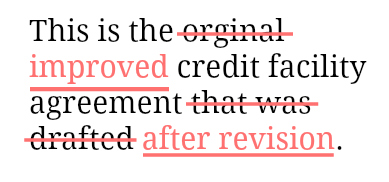 After our discussions on condition precedent clauses, restrictions placed on transfer of shares, and the meaning of ‘call’ and ‘put’ options, let us now turn our attention to the termination clause, one of the last clauses we usually see in a shareholders agreement but no less significant. It is in fact a vital clause that contains the mechanism by which an agreement can be terminated and the shareholders can exit the company.
After our discussions on condition precedent clauses, restrictions placed on transfer of shares, and the meaning of ‘call’ and ‘put’ options, let us now turn our attention to the termination clause, one of the last clauses we usually see in a shareholders agreement but no less significant. It is in fact a vital clause that contains the mechanism by which an agreement can be terminated and the shareholders can exit the company.
A termination clause typically contains two main elements: (1) the events of termination; and (2) the consequences of such an event occurring. In this post, let us look closely at some common events of termination:
– Material default by one party: Take the case of A Limited and K Limited, two parties to a shareholder agreement. K Limited commits a material default and is unable to cure that default within a specified period of time. A Limited should then have the right to terminate the agreement.
While drafting this clause, clearly define the term ‘material default’. This ensures that the agreement cannot be terminated for minor ingressions and that only serious defaults will trigger the clause. Also, it reduces the scope for parties to dispute whether a ‘material default’ has in fact occurred.
Next, the defaulting party should always be provided a specified time period (known as the ‘cure period’) to rectify the situation, and only the non-defaulting party should be given the right to terminate the agreement. Specify that to invoke this clause, the non-defaulting party must always send a written notice to the defaulting party.
– Deadlock: A deadlock typically occurs when parties are unable to agree on a vital issue necessary for running the business of the company. While drafting, always define a ‘deadlock situation’. An example could be a company’s inability to hold a board meeting on three consecutive times for want of quorum.
For example, if K Limited would like the company to take a loan and A Limited disagrees and whenever K Limited tries to organise a board meeting to discuss this issue, the directors representing A Limited do not show up and so since no proper quorum is constituted for a board meeting, it can be considered a ‘deadlock situation’.
Often, the occurrence of a deadlock situation can act as a termination event. Parties may feel that it is impossible to run the business in such a situation and they would rather terminate the agreement. Discuss with your clients whether they would like a deadlock to be a termination event or whether they would prefer to resolve the situation through other means (such as arbitration).
Further, if a deadlock situation is considered an event of termination, always specify a mechanism by which one party can send a written notice to the other party specifying that this is a deadlock and it would like to terminate the agreement.
– Insolvency of the company – A Limited and K Limited are shareholders in One Limited, a corporation that is bankrupt and going through insolvency proceedings. Obviously the shareholders will then wish to terminate the agreement since it is not possible to continue running the business. While drafting this clause, it is best to specify that the agreement will terminate automatically on the occurrence of this event. This will eliminate procedural steps such as a notice being sent by one party to another.
– Cancellation of the license required to carry on business: The shareholders agreement concerns a banking company. A bank requires a license from the Reserve Bank of India to carry on business. If this license is cancelled, the bank ceases to function. Therefore, cancellation of the license (in a regulated entity) should be drafted as an automatic termination event.
– Change in law (resulting in the business of the company becoming illegal): Currently, the law permits private entities to operate airlines (subject to the necessary approvals). Assume that over a period of time, the government changes the law and nationalises all airlines. This means that private entities can no longer operate airlines. Consequently, any shareholders agreement to operate a particular airline must automatically terminate.
There is one important distinction among termination events that comes to mind when we study these clauses – some do not result in automatic termination and require parties to send written notices to each other (for instance, in case of material default or deadlock situations) and in other cases, there is an automatic termination (in case of a change in law, insolvency, or cancellation of a license). Always keep this distinction in mind while drafting. Ask your clients whether they are comfortable with certain events leading to automatic termination. After all, the thumb rule while drafting is always to reflect the interests of your client.
Finally, remember that a termination clause usually comes into play when the parties are disputing or have an issue they cannot resolve. In such a scenario, it is necessary that the termination clause is clearly drafted and sets out in a very precise manner, the events of termination and their consequences. If the clause is open-ended or vague, it is unlikely the parties will be able to follow the clause since they will end up arguing over the very intent of the clause itself. As a lawyer, your role is to try to amicably resolve the dispute or at the very least provide the most efficient way to exit from a situation that cannot be resolved!
With this, we come to the end of this post. In my next post I will write about the consequences of termination.
Deepa Mookerjee is part of the faculty on myLaw.net.











